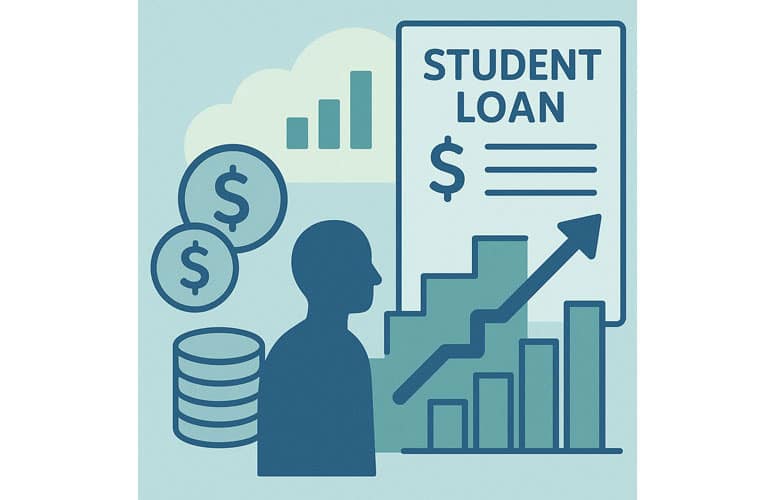
Nearly 7.7 million student loan borrowers enrolled in the SAVE plan, anticipating lower payments and a faster track to forgiveness of remaining balances. More than half of those borrowers qualified for $0 payments under the new income-driven repayment plan (IDR). Even those who didn’t qualify for $0 payments saw big cuts in the monthly payment required, and those who had borrowed $12,000 or less would see balances forgiven after just 10 years of payments.
But courts struck down many aspects of the plan, and the Trump administration is moving quickly. On July 9, the administration announced that interest on those loans would resume in just over three weeks, on August 1. The announcement encouraged borrowers who had enrolled in the SAVE plan to act quickly to “transition to a legally compliant repayment plan.”
That news comes just two months after the administration announced that it would resume involuntary collection action against borrowers in default. Seizure of tax refunds and other federal payments due, wage garnishment, and other collection activity had been paused for just over five years.
Litigation Stalled the SAVE Plan Almost Immediately
Unfortunately, the SAVE plan never fully went into effect. Lawsuits filed by two separate coalitions of states sought to stop the implementation of the plan. Many aspects of the new IDR plan were blocked pending the outcome of the litigation. However, borrowers weren’t immediately impacted. In fact, some SAVE borrowers probably didn’t even know courts had blocked the plan.
When the injunction was entered, the Biden administration placed all SAVE borrowers in administrative forbearance at 0% interest. The millions of borrowers who had qualified for $0 payments continued to pay $0 without accruing interest. Now, that’s changing.
Options for SAVE Borrowers
The SAVE plan, with its low payments, better protection against excessive interest and quicker path to forgiveness for some borrowers is off the table. For the most part, borrowers are left with the same options they had years ago, before the Biden administration began its quest to reduce student loan burdens. And those options are shrinking. For example, the DOE has announced that no new enrollments in the PAYE plan will be accepted after June 30, 2027. That plan and the income-contingent repayment plan (ICR) are also facing legal challenges.
Recent legislation created a new Repayment Assistance plan, but that plan won’t become available until mid-2026. The plan will also be less favorable to borrowers.
The Department of Education (DOE) is urging SAVE borrowers to apply for IDR plans. For most borrowers, that will mean higher payments than they would have had under the SAVE plan. It will also mean that those who borrowed less than $12,000 will see at least a decade of payments added to the timeline for forgiveness.
One Biden-Era Weapon is Still Available – and It’s Underused
The Biden administration made several attempts at canceling some student loan debt, making it easier for borrowers to get forgiveness, and otherwise lightening the load for those overwhelmed by student loan debt. Most of those efforts were immediately met with litigation, and ultimately most of them failed.
However, the administration took one step that was clearly within the scope of its authority: revising guidance to the Department of Justice (DOJ) lawyers who respond to efforts to discharge student loan debt in bankruptcy. While lawsuits have raged over repayment plans and forgiveness, that guidance has been quietly implemented in courts across the country–and it’s working.
How the 2022 Student Loan Discharge Guidance Works
The memo on student loan discharges didn’t create a new program or change the law. It was simply an administrative instruction to DOJ lawyers about how they should assess attempts to discharge student loan debt in bankruptcy.
Since 1998, student loan debt has been non-dischargeable in bankruptcy unless the borrower could establish that paying back the loan would create an undue hardship. That’s still true. Now, though, DOJ lawyers have some clear, detailed, and much more borrower-friendly instructions about what constitutes undue hardship.
The number of student loan borrowers attempting to discharge loans in bankruptcy grew slowly, and by the middle of 2024 the DOJ was reporting that 98% of efforts to discharge student loans in bankruptcy were wholly or partly successful. That means 98% of those who filed an adversary proceeding to discharge student loans saw either part or all of their student loan balance eliminated.
The Clock May Be Ticking on Discharging Student Loans in Bankruptcy
The new guidance has been a powerful tool for student loan debtors who once believed there was no way out from under that mountain of debt. However, guidance to the DOJ can be tossed out or revised just as easily as it was implemented. With the current administration’s trend toward eliminating relief measures for student loan borrowers, we must anticipate that the guidance will find its way to the chopping block at some point in the future. If you’re considering attempting to discharge student loans in bankruptcy, you can’t afford to delay.
Talk to an Experienced Los Angeles Bankruptcy Attorney
At Borowitz & Clark, we’ve helped tens of thousands of people take control of their financial lives. For more than 25 years, we’ve had to advise most student loan debtors that their loans were likely not dischargeable. Now, many people who would previously have been ineligible have a real chance to eliminate crushing student loan debt. But that window could close at any time.
Don’t delay. Schedule a free consultation with a veteran debt relief lawyer right now. Just call 877-439-9717 or fill out our contact form.
